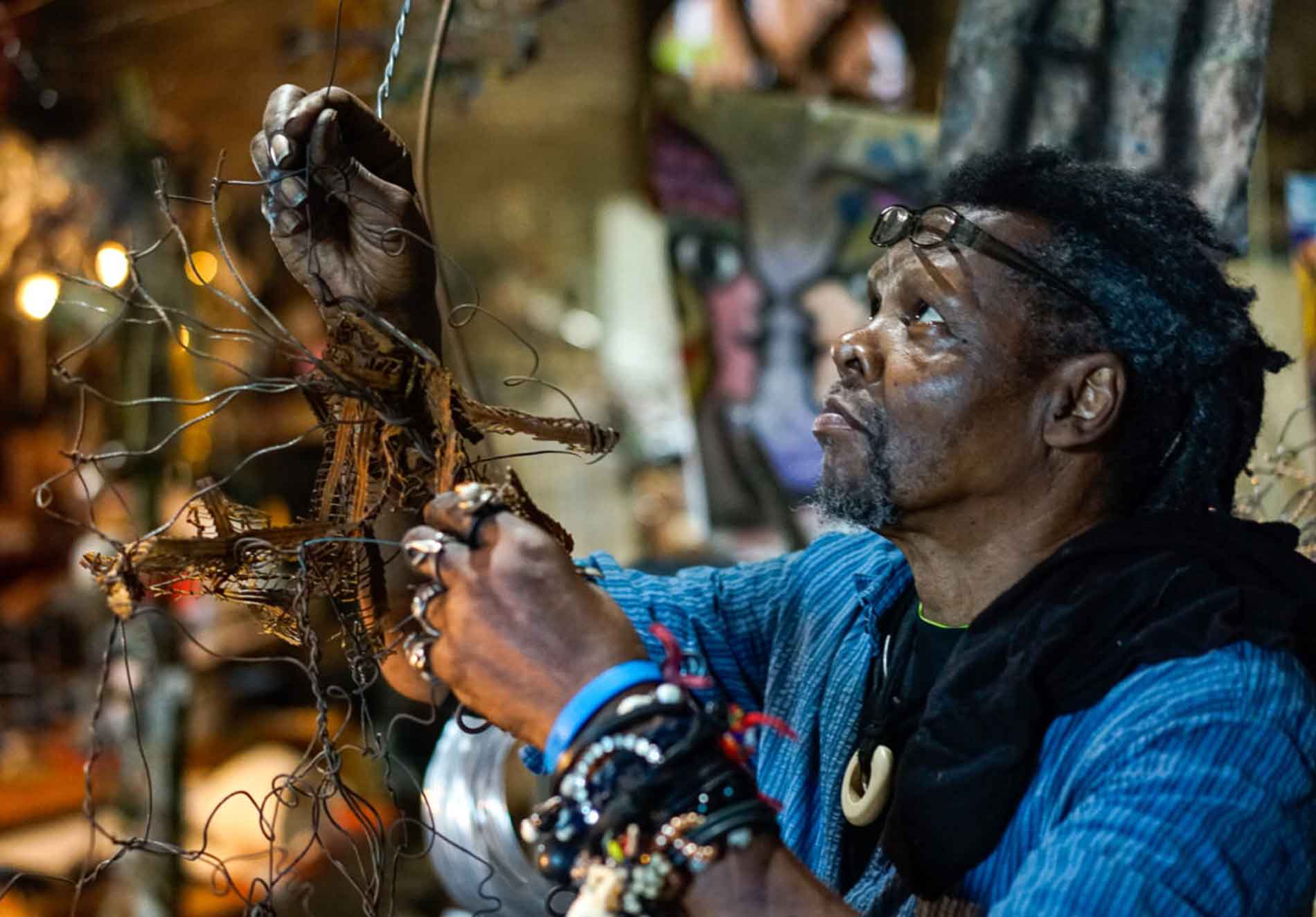
The documentary, Thumbs Up for Mother Universe, tells the story of Lonnie Holley’s struggles and successes as he rose to prominence as a visual artist and musician. Over 22 years in the making, the film follows the story of Holley’s life as well as provides an in-depth look into the methods behind the creation of his art, made from discarded materials.
Mausiki Scales – a guest from the film – says, “There is a well-respected Grio historian from Mali who states that all African art speaks; that African art speaks and it’s an emanation of the artist that creates it. And I think about Lonnie Holley’s pieces in that regard as them having his particular ashe, and very much in the African tradition and the diaspora, the notion of making something out of nothing. A grandmother is able to make a pot of soup and you didn’t see any ingredients in the cupboard; or the use of found objects and finding value in them. In several of my trips into West Africa, very little gets thrown away, and so I look at Lonnie’s work as being in that continuum within the African diaspora.”
Holley thrives using the materials others often dismiss, such as hangers, wire, sandstone, and plastics, but he uses them to tell his own story. Holley once said, “Garbage is a part of my life.”
George King, the producer and director of the documentary, makes note of the thorough process Holley goes through to create his plan and find the right “garbage” to create his art. “It’s actually fascinating to watch because after a while you start to see the methodology at work,” said King. “He collects all these things because they grab his interest for one reason or another, maybe a texture or a color or some aspects to the materials that he’s picking up, and then he kind of lives in this environment surrounded by this stuff. So when he starts making something, he’s clearly got an idea in his mind and he will put something together, some arrangement of these artifacts, these objects… He’s looking for something that’s going to fit into what he’s already created… He grabs something and he weaves it into the work in some way, or not, or decides that it’s the wrong thing. He really venerates these materials. He’s very interested in the materials themselves, and he says and he talks about this in the film that Black history wasn’t recorded and Black objects weren’t collected in the same way, of course, that white society collects things that are in museums and things like this. So he says that actually it’s the trash heaps, it’s the garbage dumps. That’s where our history is, and he mines it and then puts together these works.”






